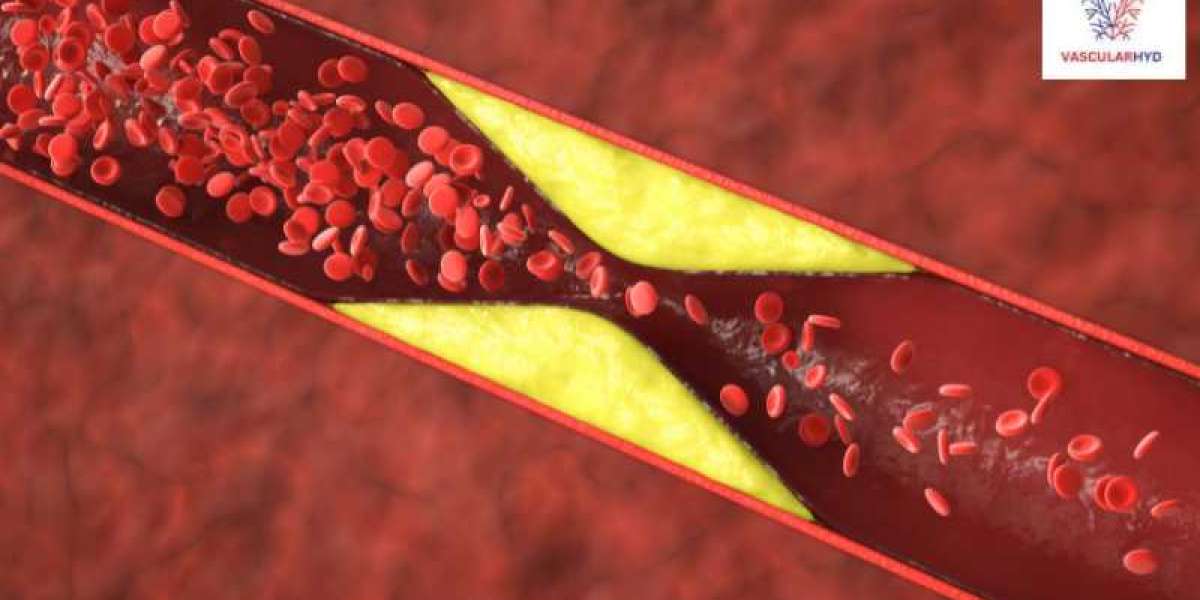Welcome to our blog where we shed light on a common yet often silent struggle that affects many individuals - Peripheral Artery Disease (PAD). Have you heard of this condition before? If not, don't worry, we're here to unravel the mysteries surrounding PAD, explore its causes and symptoms, delve into diagnosis and treatment options, and discuss how lifestyle changes can make a significant impact. Join us as we uncover the hidden truths about PAD and learn why awareness is key in managing this vascular disease effectively.
What is Peripheral Artery Disease (PAD)?
Peripheral Artery Disease (PAD) is a common circulatory condition that occurs when narrowed arteries reduce blood flow to the limbs, most commonly the legs. The narrowing is often due to a buildup of plaque made up of fats, cholesterol, and other substances along the artery walls. This restricts the oxygen-rich blood supply essential for proper functioning of muscles and tissues in the affected areas. Seeking timely peripheral artery disease treatment in Hyderabad from specialized vascular experts at VascularHyd is crucial for managing symptoms, preventing complications, and improving overall vascular health.
People with PAD may experience symptoms such as leg pain while walking or climbing stairs, numbness or weakness in legs, slow-healing wounds on feet or toes, and changes in skin color or temperature in the lower extremities. If left untreated, PAD can lead to serious complications like infections, gangrene, and even amputation. Early detection and management are crucial in preventing progression of this condition.
Understanding what PAD entails empowers individuals to recognize potential symptoms early on and seek appropriate medical care promptly for better outcomes.
Causes and Risk Factors for PAD
Peripheral Artery Disease (PAD) can be caused by a buildup of plaque in the arteries, known as atherosclerosis. This condition restricts blood flow to the limbs, leading to various symptoms like leg pain and numbness. Risk factors for PAD include smoking, high cholesterol levels, diabetes, high blood pressure, and age.
Smoking is a significant risk factor for developing PAD due to its detrimental effects on blood vessels. High cholesterol levels contribute to plaque formation in the arteries, narrowing them over time. Individuals with diabetes have an increased risk of PAD as uncontrolled blood sugar levels can damage blood vessels.
High blood pressure puts additional stress on the arteries, increasing the likelihood of developing PAD. Advancing age is also a common risk factor for this condition as arterial walls tend to stiffen and narrow with age. Understanding these causes and risks can help individuals take proactive steps towards prevention and early detection of PAD.
The Silent Symptoms of PAD
Peripheral Artery Disease (PAD) is often referred to as a silent condition because its symptoms can go unnoticed or be mistaken for other issues. One of the key silent symptoms of PAD is leg pain or cramping that occurs during physical activity but subsides with rest. This discomfort, known as claudication, is due to reduced blood flow to the legs caused by narrowed arteries. If you experience such symptoms, consulting with vascular specialists like Dr. Rahul Agarwal is essential for accurate diagnosis and appropriate peripheral artery disease treatment.
Other subtle signs of PAD include numbness or weakness in the legs, slow-to-heal sores on the feet or toes, and a lower temperature in one leg compared to the other. These symptoms may not seem alarming at first glance but should not be ignored.
It's essential to recognize these silent signs and consult a healthcare professional promptly for proper diagnosis and treatment. Early detection plays a crucial role in managing PAD effectively and preventing complications down the road. If you experience any unusual sensations or changes in your legs, don't hesitate to seek medical attention for further evaluation.
Diagnosis and Treatment Options
When it comes to Peripheral Artery Disease (PAD), early diagnosis is key. Symptoms like leg pain or cramping during physical activity are often brushed off as a normal part of aging, but they could indicate an underlying issue.
Diagnosing PAD typically involves a physical exam, checking pulses in the legs, and non-invasive tests like Ankle-Brachial Index (ABI) measurements or Doppler ultrasound. In more complex cases, imaging tests such as angiography may be necessary to get a clearer picture of the blood flow in the affected area.
Treatment options for PAD aim to manage symptoms, improve quality of life, and reduce the risk of complications like ulcers or even amputation. Lifestyle changes such as quitting smoking, adopting a healthy diet, and regular exercise play a crucial role in managing PAD.
In some cases, medications like antiplatelet drugs or statins may be prescribed to help lower cholesterol levels and prevent blood clots. For severe blockages, procedures like angioplasty with stenting or bypass surgery may be recommended to restore proper blood flow in the affected arteries.
Remember that each case of PAD is unique, so treatment plans should always be personalized based on individual needs and medical history. Early detection and proactive management can make all the difference in living well with this condition.
Managing PAD: Lifestyle Changes and Medications
When it comes to managing Peripheral Artery Disease (PAD), a combination of lifestyle changes and medications plays a crucial role in improving symptoms and slowing down the progression of the condition. Adopting a healthy lifestyle is key – this includes quitting smoking, following a balanced diet low in saturated fats and cholesterol, engaging in regular exercise, and maintaining a healthy weight.
In addition to lifestyle modifications, your healthcare provider may prescribe medications to help manage PAD. These medications can help lower blood pressure, control cholesterol levels, prevent blood clots, and improve circulation. It's essential to take these medications as prescribed and attend follow-up appointments to monitor their effectiveness.
Remember that managing PAD is an ongoing process that requires dedication and consistency. By making positive changes to your lifestyle and adhering to medication regimens, you can take proactive steps towards better vascular health. Always consult with your healthcare team for personalized advice tailored to your specific needs.
The Emotional Impact of PAD on Patients
Living with Peripheral Artery Disease (PAD) can take a toll on one's emotional well-being. The constant struggle with symptoms like leg pain and numbness can lead to frustration and feelings of helplessness. Patients may experience anxiety about their condition worsening or fear of amputation, affecting their quality of life.
The limitations imposed by PAD, such as difficulty walking long distances or participating in activities they once enjoyed, can lead to feelings of isolation and sadness. It's common for individuals with PAD to feel misunderstood by those around them who may not fully grasp the impact of the disease on daily living.
Moreover, the chronic nature of PAD requires ongoing management and lifestyle adjustments, which can be emotionally draining for patients. Dealing with the physical discomfort coupled with the emotional burden can result in stress and even depression for some individuals battling this condition.
The Importance of Raising Awareness and Seeking Support
Raising awareness about Peripheral Artery Disease (PAD) is crucial in helping individuals recognize the symptoms and seek timely medical attention. By shedding light on this often silent condition, we can encourage early detection and intervention, potentially saving lives.
Educating the public about PAD also helps to reduce stigma and misconceptions surrounding vascular diseases. When more people understand the risk factors and preventive measures for PAD, they are empowered to take control of their health and make informed decisions.
Support groups play a vital role in providing emotional support and guidance to individuals living with PAD. Connecting with others who share similar experiences can offer comfort, encouragement, and valuable insights into managing the challenges associated with this condition.
By promoting awareness and fostering a supportive community for those affected by PAD, we can create a network of resources that enhances quality of life and promotes overall well-being. Let's join hands in spreading knowledge, offering support, and advocating for better care for individuals battling Peripheral Artery Disease.
Conclusion
Peripheral Artery Disease (PAD) is a common but often overlooked condition that affects many individuals worldwide. It can significantly impact an individual's quality of life and overall well-being. Raising awareness about PAD, understanding its silent symptoms, and seeking timely diagnosis and treatment are crucial steps in managing this condition effectively.
By making lifestyle changes, following prescribed medications, and seeking support from healthcare professionals like Dr. Rahul Agarwal at Project: vascularhyd for peripheral artery disease treatment in Hyderabad, patients can better manage their PAD and improve their quality of life.
Remember, early detection and proactive management are key in combating the challenges posed by PAD. Stay informed, stay vigilant, and prioritize your vascular health to lead a healthier and happier life.


